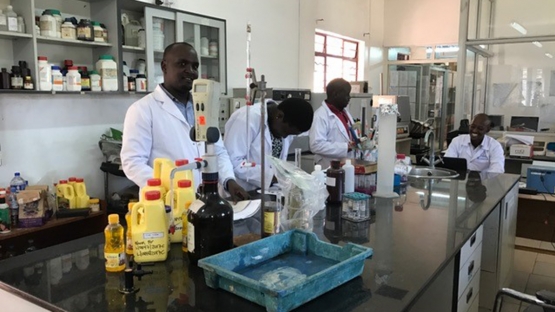In October 2009, Ms. Mary Nakibuuka from the Uganda National Bureau of Standards (UNBS) attended her first IAEA training course, on analytical techniques for veterinary drugs residues in foods, at the FAO/IAEA laboratory in Seibersdorf. It was to be an eye-opening experience for her, who quickly realized that her home institution did not have the capacity it needed to fulfil its mandate to ensure the quality and safety of locally manufactured products.
Agriculture is the backbone of the economy in Uganda, employing over 60% of the population and contributing over 70% of export earnings (World Bank, 2016). The safety and quality of agricultural produce is of the utmost importance if consumers are to be protected, trade facilitated, and national export competitiveness ensured. Ms Nakibuuka was quick to recognize that Uganda needed greater capabilities for the inspection, monitoring and testing of veterinary drug residues in animals, animal products and animal feed.
She suggested that her institution request support from the IAEA in the form of a technical cooperation project that would build national capacities to inspect, monitor and test veterinary drug residues in Uganda, using nuclear and isotopic techniques. Recognizing that senior management support would be essential for the success of the project, Ms. Nakibuuka worked with Uganda’s National Liaison Officer, Ms. Sarah Nafuna, and the IAEA Programme Management Officer to build awareness of the value that nuclear science and technology could add to the country’s analytical capabilities. “Buying into and owning the project turns out to be one of the management’s best decisions,” said Ms. Nakibuuka.
Buying into and owning the project turns out to be one of the management’s best decisions.




